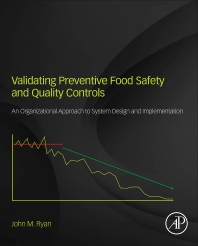FroYo: Keepin' it Real
For the last year or so we’ve been covering the amazing story of the comeback of frozen yogurt. This is a category that has come back from the dead enough times that it ought to be the subject of one of those creepy zombie movies. I can see it now Night of the Frozen Living Cultures.
A big part of the rebirth of frozen yogurt has been centered on the tart, all natural, soft serve interpretation that originated in Korea before exploding in Los Angeles and then spreading like wildfire throughout the west. Another major contributor is the fact that the most dominant player in the ice cream business has used its revolutionary ultra low temperature ice cream technology to breath new life into retail frozen yogurt.
Whatever the roots of the frozen yogurt renaissance, the fact is, frozen yogurt sales are growing again, and this provides a great opportunity for dairy processors. As with any opportunity it may not last forever, and any misstep could let all the air out of the balloon.
The most obvious misstep would be to ask the new fans of frozen yogurt to accept something of a lower quality than the products that have brought the excitement back to the category. For frozen yogurt, an essential element in what constitutes quality is nutrition. Yogurt has live active cultures, and they are good for you.
At IDFA’s Ice Cream Technology Conference a few weeks ago, cultural viability in frozen yogurt was the topic of a roundtable breakout discussion: more specifically the issue whether or not the industry should ask FDA to set a standard of identity for frozen yogurt, with specific thresholds set for culture viability.
Some participants in that discussion and the broader discussion elsewhere tell me they believe a standard of identity is crucial to the continued success of the category.
Meanwhile, in this month’s issue, Tharp and Young tackle the practical aspects of defining frozen yogurt in the here and now for the purpose of manufacturing the stuff. If you are making and selling frozen yogurt, or if you plan to do so in the near future, you should consider this required reading.
Whether or not new standards of identity are assigned for frozen yogurt, manufacturers should do their best to ensure that products in this hot growing category deliver on their promises. That will likely mean natural ingredients and live cultures.
Today’s consumer wants to know if the products he or she buys are really providing what they claim to provide. They want to see some evidence of sincerity, if not on a label, then on the company’s website. Many will also go to independent websites and chat rooms, where they will read (and contribute to) long discussions about the relative merits of products in the market.
So, if dairy processors like what they see in this new frozen yogurt frontier, and they want to keep the opportunity alive, then they need to pay attention to what kind of product they are really making, and they need to keep it real.
David Phillips, Chief Editor of Dairy Foods can be reached at 630/694-4341 or phillipsd@dairyfoods.com.
A big part of the rebirth of frozen yogurt has been centered on the tart, all natural, soft serve interpretation that originated in Korea before exploding in Los Angeles and then spreading like wildfire throughout the west. Another major contributor is the fact that the most dominant player in the ice cream business has used its revolutionary ultra low temperature ice cream technology to breath new life into retail frozen yogurt.
Whatever the roots of the frozen yogurt renaissance, the fact is, frozen yogurt sales are growing again, and this provides a great opportunity for dairy processors. As with any opportunity it may not last forever, and any misstep could let all the air out of the balloon.
The most obvious misstep would be to ask the new fans of frozen yogurt to accept something of a lower quality than the products that have brought the excitement back to the category. For frozen yogurt, an essential element in what constitutes quality is nutrition. Yogurt has live active cultures, and they are good for you.
At IDFA’s Ice Cream Technology Conference a few weeks ago, cultural viability in frozen yogurt was the topic of a roundtable breakout discussion: more specifically the issue whether or not the industry should ask FDA to set a standard of identity for frozen yogurt, with specific thresholds set for culture viability.
Some participants in that discussion and the broader discussion elsewhere tell me they believe a standard of identity is crucial to the continued success of the category.
Meanwhile, in this month’s issue, Tharp and Young tackle the practical aspects of defining frozen yogurt in the here and now for the purpose of manufacturing the stuff. If you are making and selling frozen yogurt, or if you plan to do so in the near future, you should consider this required reading.
Whether or not new standards of identity are assigned for frozen yogurt, manufacturers should do their best to ensure that products in this hot growing category deliver on their promises. That will likely mean natural ingredients and live cultures.
Today’s consumer wants to know if the products he or she buys are really providing what they claim to provide. They want to see some evidence of sincerity, if not on a label, then on the company’s website. Many will also go to independent websites and chat rooms, where they will read (and contribute to) long discussions about the relative merits of products in the market.
So, if dairy processors like what they see in this new frozen yogurt frontier, and they want to keep the opportunity alive, then they need to pay attention to what kind of product they are really making, and they need to keep it real.
David Phillips, Chief Editor of Dairy Foods can be reached at 630/694-4341 or phillipsd@dairyfoods.com.
Looking for a reprint of this article?
From high-res PDFs to custom plaques, order your copy today!







